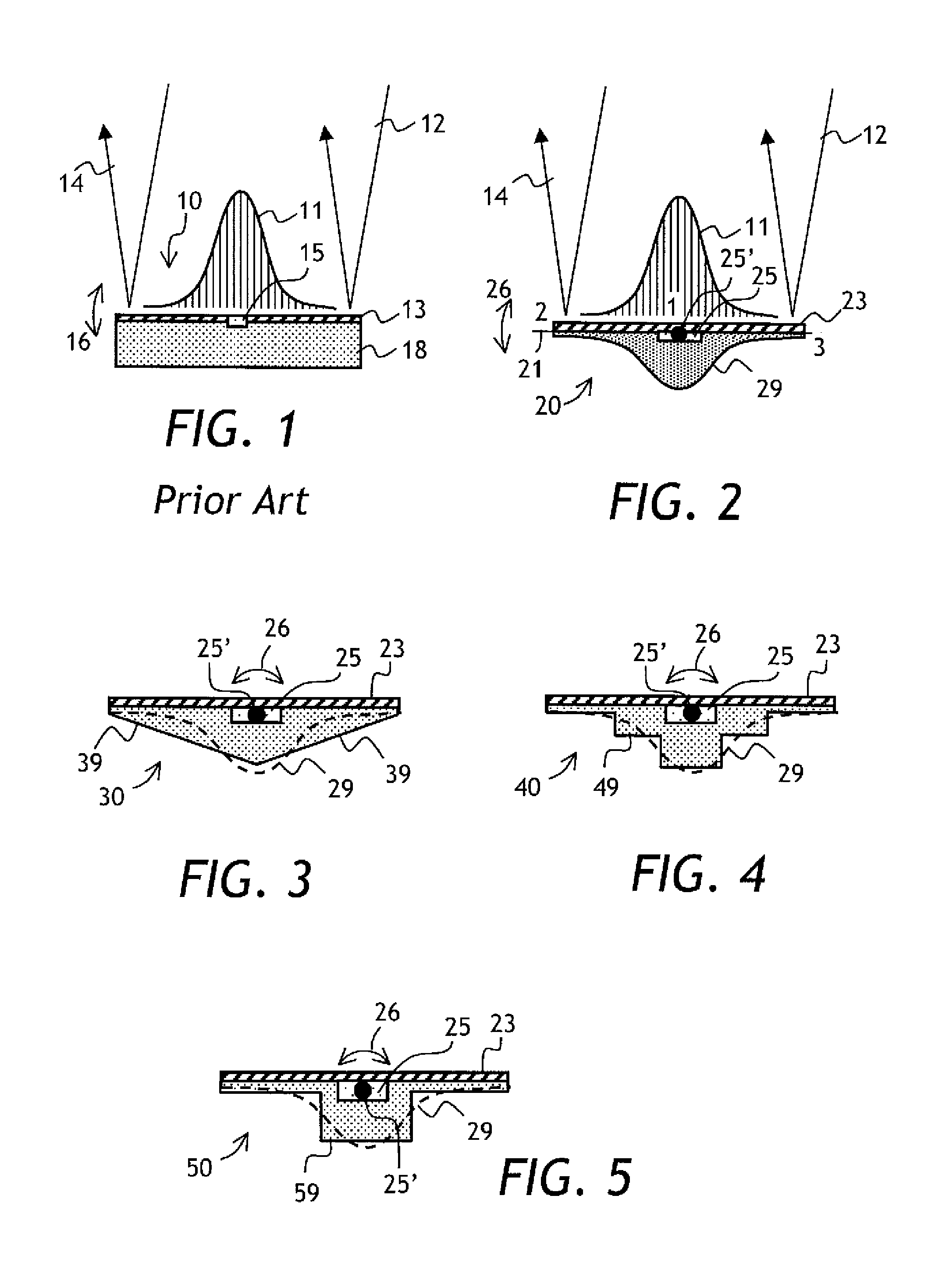Tiltable MEMS mirror
a mems mirror and mirror technology, applied in the field of mems mirrors, can solve the problems of increasing the sensitivity of mems mirrors to shock and vibration, increasing the mass and moment of inertia, and a new problem to occur, so as to reduce the quality of optical beams reflected
- Summary
- Abstract
- Description
- Claims
- Application Information
AI Technical Summary
Benefits of technology
Problems solved by technology
Method used
Image
Examples
Embodiment Construction
[0029]While the present teachings are described in conjunction with various embodiments and examples, it is not intended that the present teachings be limited to such embodiments. On the contrary, the present teachings encompass various alternatives, modifications and equivalents, as will be appreciated by those of skill in the art.
[0030]Referring now to FIG. 1, an optical beam 12 having a spatial intensity distribution 11 impinges on a conventional flat MEMS mirror 10 having a substrate 18 supporting a reflective coating 13. The optical beam 12 reflects from the reflective coating 13, as shown at 14. The MEMS mirror 10 has a torsional hinge 15 for tilting the MEMS mirror 10 as shown by arrows 16, thus steering the reflected optical beam 14. The MEMS mirror 10 has a uniform thickness.
[0031]The reflective coating 13 of the MEMS mirror 10 typically has a non-zero curvature due to residual stresses, or thermally induced stresses in the reflective coating 13 due to thermal mismatch with...
PUM
 Login to View More
Login to View More Abstract
Description
Claims
Application Information
 Login to View More
Login to View More - R&D
- Intellectual Property
- Life Sciences
- Materials
- Tech Scout
- Unparalleled Data Quality
- Higher Quality Content
- 60% Fewer Hallucinations
Browse by: Latest US Patents, China's latest patents, Technical Efficacy Thesaurus, Application Domain, Technology Topic, Popular Technical Reports.
© 2025 PatSnap. All rights reserved.Legal|Privacy policy|Modern Slavery Act Transparency Statement|Sitemap|About US| Contact US: help@patsnap.com



